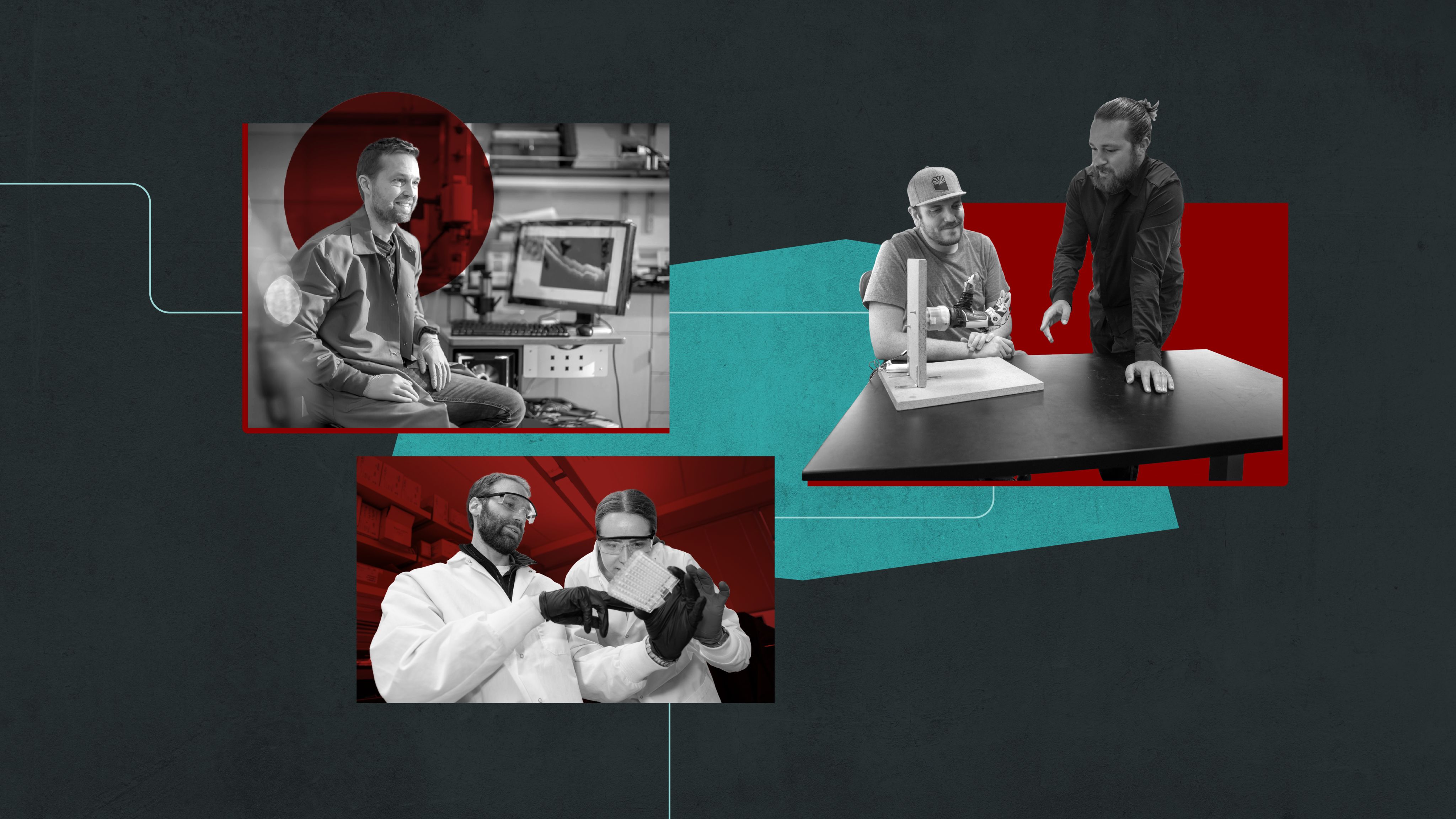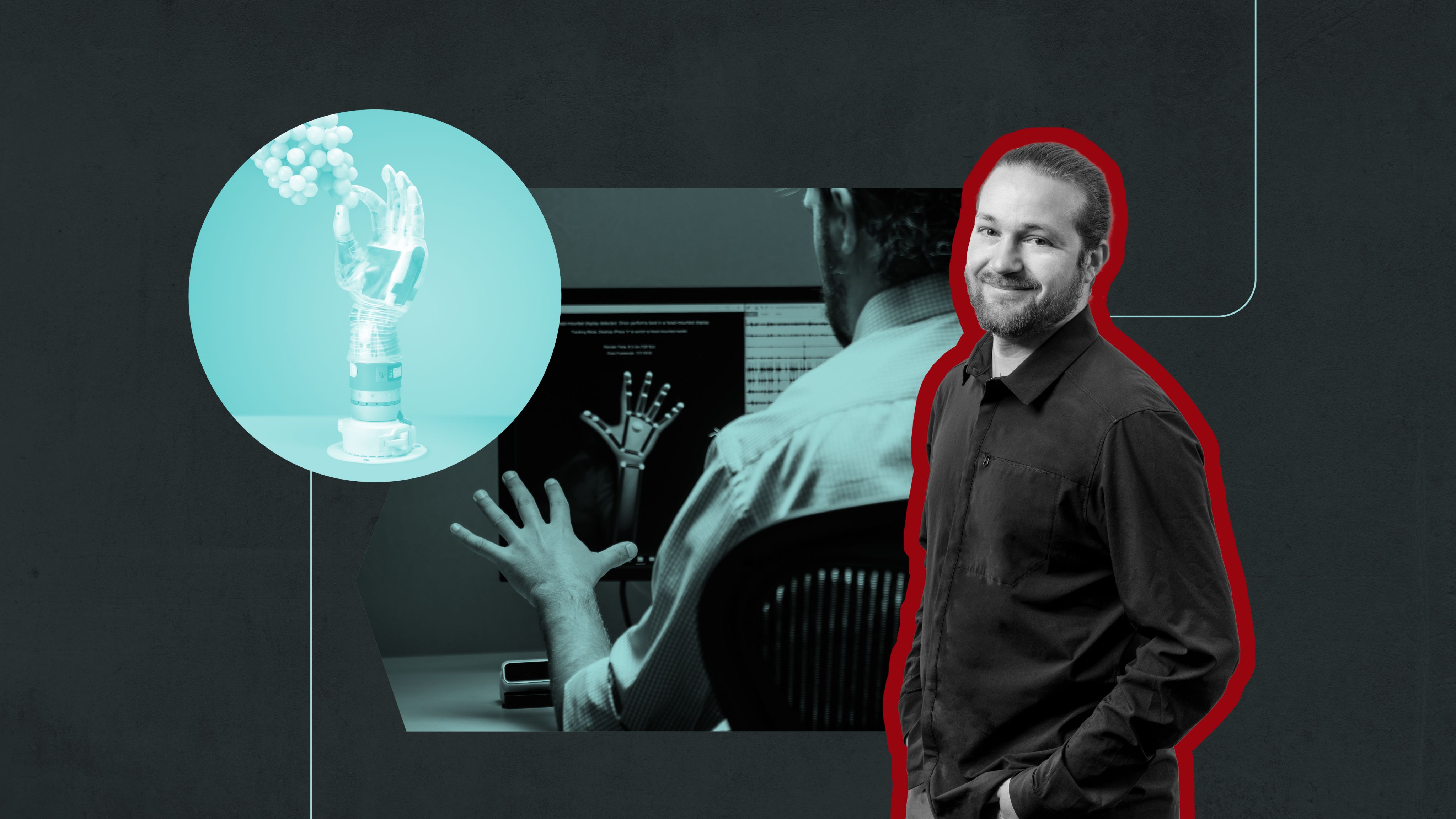Pioneering the Future
Transformative Technologies for a Healthier World

May 20, 2025
At University of Utah Health, scientists are advancing biomedicine with truly transformative innovations. Their achievements are opening new paths for research, empowering scientists to study disease and explore potential treatments in powerful ways that were not previously possible. Our scientists are also using their creativity to build new technologies that will directly improve the lives of patients.
- Discovering that neurons in the retina can be revived after death is enabling researchers to investigate many of the world’s leading causes of blindness in new ways.
- With technology developed at the U, artificial limbs can communicate with the nervous system to give users better control and a sense of touch.
- Novel strategies for drug development will leverage new insights into how molecular interactions modulate biochemical pathways in cells.

Seeing the Light
Most of the world’s leading causes of blindness are conditions that damage the eye’s retina, which makes vision possible by relaying signals to the brain in response to light. Diabetes, genetic conditions, and aging can all cause the retina to deteriorate, leading to vision loss for millions of people. These conditions have been difficult to study because human eyes are so different from the eyes of the laboratory animals that scientists usually rely on to investigate disease processes and evaluate potential treatments.
Now, however, scientists at U of U Health have opened the door to studying the function of both healthy and diseased retinas in human eyes donated after death. Neurons in the retina quickly stop signaling after a person dies. But Frans Vinberg, PhD, neuroscientist at the John A. Moran Eye Center, and collaborators have figured out how to protect and revive postmortem retinas so they can be used in research.
Vinberg and his colleagues found that the loss of signaling in postmortem retinas came down to oxygen deprivation and changes in pH. If donated eyes could be collected quickly enough to prevent severe oxygen deprivation—which they found meant retrieving the tissue in the first half-hour after death—and stored in a solution with the right pH balance, they could restore the most essential function of cells in the retina: communicating with one another in response to light.
One day, the team’s approach might bring scientists closer to making donated retinas viable for transplantation. But it has already changed the way Vinberg and other scientists study diseases that cause blindness. “The scientific community can now study human vision in ways that just aren’t possible with laboratory animals,” he says.

Prosthetic Limbs that Move and Feel
For the more than two million people in the United States who have lost a limb, prostheses can restore some function but never really replace a missing arm or leg. In fact, most current prostheses are so cumbersome that nearly half of amputees stop using them.
U scientists have been working toward better prosthetic limbs for decades, with the development of technology that connects an artificial limb directly to the user’s nervous system so they can control its movements with their thoughts. More recently, Jacob George, PhD, director of the NeuroRobotics Lab, and colleagues have engineered the system to send signals back to the brain so the arm can transmit sensations of touch. A state-of-the-art prosthesis called the LUKE Arm, currently in clinical testing, is powered by this technology.
The LUKE Arm is named after the lifelike robotic arm that Luke Skywalker receives in the Star Wars movie The Empire Strikes Back. It integrates with the nervous system through implanted sensors that tap into existing electrical signals from nerves and muscles. Artificial intelligence translates signals from the nerves and muscles into movement and translates physical forces on the artificial hand into a sense of touch. Sensations from the device give users the feedback they need to handle delicate objects or pick things up without looking at them.
Early testers have reported experiencing a sense of embodiment with the new limb. “This means that the prosthetic hand actually starts to become incorporated into your body image,” George says. “At that point, it’s no longer just a tool, but it starts to be something that you would consider your own hand.”

Finding Inspiration for Drug Development in Metabolic Regulators
The metabolic pathways that shape how our bodies use nutrients and energy are under constant adjustment. Molecular regulators keep things in balance as conditions change by speeding some processes up, slowing others down, and redistributing resources. Much of this is managed by small molecules called metabolites, which can modulate the proteins that carry out a cell’s work. When these interactions are disrupted, it can make us more vulnerable to a host of diseases, including cancer, diabetes, and heart disease.
There are thousands of metabolites inside our cells, and surprisingly little is known about how most of them interact with other cellular components. New technology developed by U of U Health faculty Jared Rutter, PhD, and Kevin Hicks, PhD, is changing that, allowing researchers to systematically identify which metabolites interact with particular proteins.
Rutter, Hicks, and their team used their platform, which they named MIDAS, to test for interactions between metabolites and the enzymes involved in carbohydrate metabolism. They found more than 800, many of which were previously unknown to researchers. With further experiments, they figured out exactly how several of the metabolites interact with enzymes to dampen their activity. “This is just the tip of the iceberg, the proteome is vast and much of it may be regulated by metabolite interactions,” says Hicks.
Their findings don’t just help explain how healthy cells work. By revealing specific ways in which metabolic pathways can be modulated, they suggest how drug developers might target the same pathways to treat disease. “We’re discovering how nature has evolved to drug its own proteins and pathways,” says Rutter. He cofounded, and Hicks consults, for a company called Atavistik, which builds on this knowledge to explore potential treatments for cancer and metabolic diseases. “By following nature’s lead, we’re learning how to make better therapeutics,” he says.
Pioneering the Future: Stories of Discovery & Innovation at University of Utah Health
Produced by Kyle Wheeler & Julie Kiefer
Written by Jennifer Michalowski
Editing by Julie Kiefer & Nick McGregor
Layout by Kyle Wheeler
Designs by Modern8
Photography by Charlie Ehlert, Kristan Jacobsen, & Dave Titensor

